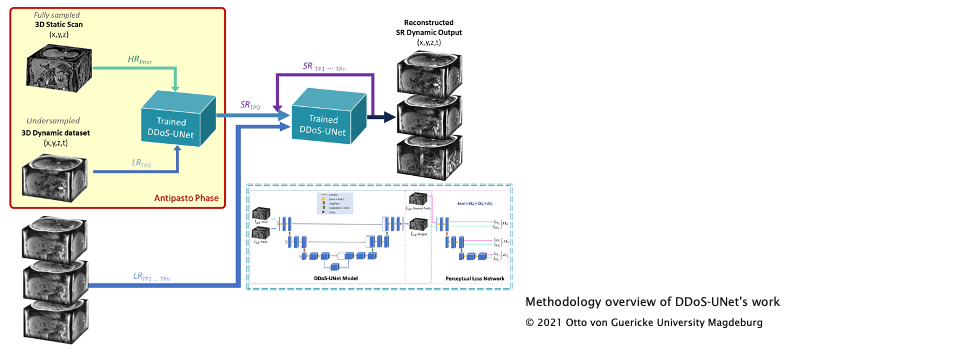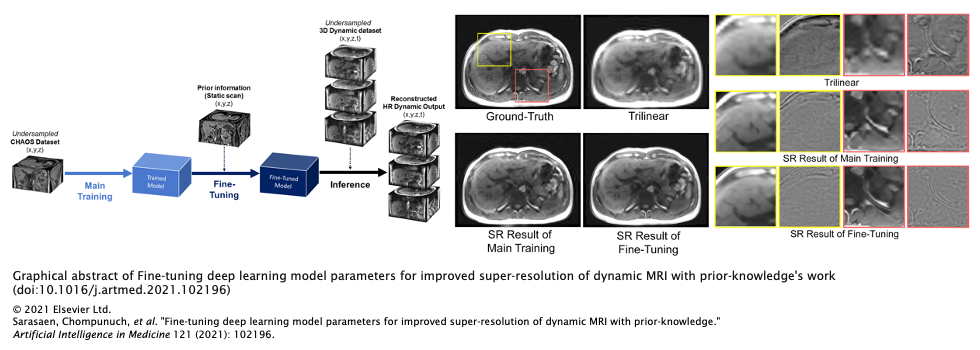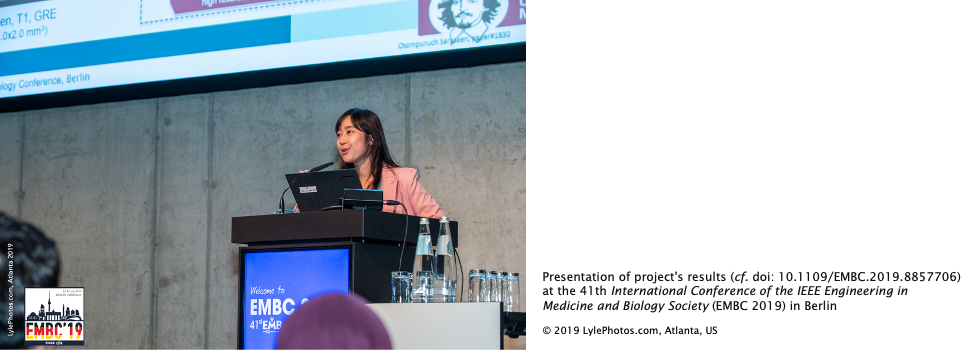Model-based reconstruction methods for CT perfusion imaging
...
M1.7 | Model-based reconstruction MRI
Funding period: Oct 2017 to Dec 2021
Researcher: Chompunuch Sarasaen
Wrap-up
Keywords: dynamic MRI, prior knowledge, super-resolution, Deep Learning, MRI reconstruction
Background:
Magnetic Resonance Imaging (MRI) Is a promising tool for minimally invasive interventions. Nevertheless, achieving high temporal resolution may result in compromised spatial resolution, so-called a spatio-temporal trade-off. In fact, there is available prior knowledge such as high resolution planning scans or dynamic images containing temporal redundancy which could be useful but are typically ignored.
Objective:
To incorporate prior knowledge in model-based (super-resolution) MRI reconstruction to generate high spatial and high temporal resolution of abdominal dynamic MRI with less-than-complete data.
Methods:
The study investigates the incorporation of prior information of MR data: FTSuperResDyn and DDoS-UNet. The FTSuperResDyn consists of three main steps: main training, fine-tuning with subject-specific scan, and inference. The patch-based super-resolution was utilized to tackle the lack of abdominal MR data. The main training performed with the publicly available dataset (T1 dual images). Then, the network was fine-tuned using high resolution plaining scan. After that, 3D dynamic images were reconstructed. Furthermore, the DDoS-UNet aims to include the additional temporal information to the network by means of dual channel training of static and dynamic images of the different time-points. The performance of both proposed methods were evaluated with different in-plane undersampled levels.
Results:
While reconstructing the super-resolved images, the FTSuperResDyn approach achieved the average SSIM value of the highest undersampling (6.25% of the k-space) before and after fine-tuning were 0.939 ± 0.008 and 0.957 ± 0.006, respectively. The DDoS-UNet model showed the ability to reconstruct even higher undersampling of 4% of the k-space with the average SSIM of 0.951 ± 0.017. It can be seen that both of the proposed methods could reconstruct high spatial resolution images while reducing scan-time.
Conclusions:
This research illustrates the potential of incorporating prior knowledge into dynamic MRI reconstruction to mitigate the spatio-temporal trade-off.
Originality:
This work aimed at exploiting prior information to incorporate it into the framework with different aspects to tackle the spatio-temporal trade-off in MRI.












